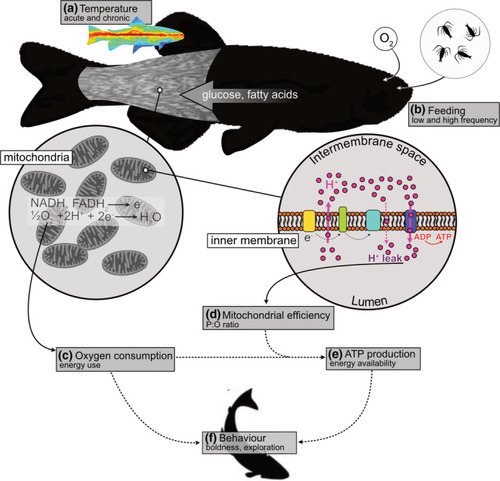FIGURE 1
- ID
- ZDB-FIG-210729-12
- Publication
- Le Roy et al., 2021 - Diet and temperature modify the relationship between energy use and ATP production to influence behavior in zebrafish (Danio rerio)
- Other Figures
- All Figure Page
- Back to All Figure Page
|
Conceptual outline of the study. Food availability does not necessarily indicate energy available for cellular work, at least partly because of variation in mitochondrial efficiency. We tested whether different acute and acclimation temperatures (a) interact with food availability (b) to alter energy transduction efficiency and thereby influence behavior. Food is broken down into macronutrients, and glucose and fatty acids are principally responsible to yield substrates (NADH and FADH2) oxidized in muscle mitochondria. Whole‐animal oxygen consumption (c) is therefore a measure of the energy used in the mitochondrial electron transport chain. However, the efficiency of mitochondria (d) in converting the energy released by substrate oxidation into ATP (P:O ratio) can vary with environmental conditions. To estimate the amount of ATP produced, we corrected oxygen consumption for mitochondrial efficiency (e). This procedure permitted us to test the relative importance of increased energy use or increased ATP availability in influencing behavior (f), for example, by stimulating or reducing foraging, respectively. Note that the broken arrows indicate connections between experimental measures rather than biological cause‐and‐effect relationships |

